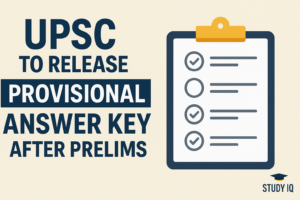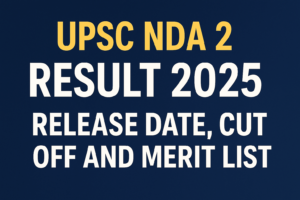Q11. A new lady architect, Seema, trained at Manchester School of Architecture, UK joined as Senior Architect in your division. During the briefing about the project, Seema made some suggestions which would not only add value to the project, but would also reduce completion time. This has made the Chief Architect insecure and he is constantly worried that all the credit will go to her. Subsequently, he adopted a passive and aggressive behaviour towards her and has become disrespectful to her. Seema felt it embarrassing as the Chief Architect left no chance of humiliating her. He would very often correct her in front of other colleagues and raise his voice while speaking to her. This continuous harassment has resulted in her losing confidence and self-esteem. She felt perpetually tensed, anxious and stressed. She appeared to be in awe of him since he has had a long tenure in the office and has vast experience in the area of her work. You are aware of her outstanding academic credentials and career record in her previous organisations. However, you fear that this harassment may result in compromising her much needed contribution in this important project and may adversely impact her emotional well-being. You have also come to know from her peers that she is contemplating tendering her resignation.
(a) What are the ethical issues involved in the above case?
(b) What are the options available to you in order to complete the project as well as to retain Seema in the organization ?
(c) What would be your response to Seema’s predicament? What measures would you institute to prevent such occurrences from happening in your organization? 20 Marks (Answer in 250 words) Ethics Case Study
Approach
(a) Mention the ethical issues involved in this case.
(b) Mention the options available to you and list out their pros and cons briefly.
(c) Give your response to Seema’s difficult and embarrassing situation along with the reason.
(d) List out the measures you are going to take to prevent these kinds of occurrences in your organisation in future.
(a) Ethical Issues involved in this case:
- Abuse of Power and Authority: The Chief Architect’s misuse of his position of authority to harass and belittle Seema represents an abuse of power, which is unethical.
- Failure to Promote a Healthy Work Environment: The Chief Architect’s behaviour contributes to a hostile work environment that can negatively affect the well-being and performance of all employees, not just Seema.
- Fear of Retaliation: Seema’s fear of the Chief Architect’s reaction and her contemplation of resigning due to harassment highlight the ethical issue of employees feeling unable to report misconduct without fear of retaliation.
- Compromised Project Success: The Chief Architect’s behaviour jeopardises the successful completion of the project by stifling Seema’s valuable contributions, raising ethical concerns about the potential negative impact on project outcomes.
- Gender Bias: If it is determined that the Chief Architect’s actions are influenced by gender bias or prejudice, it raises ethical concerns related to gender discrimination and equality in the workplace.
- Organisational Culture: The case highlights issues related to the organisation’s culture, particularly regarding how it deals with conflicts and supports diversity and inclusion. An ethical organisation should foster a positive culture that promotes collaboration, respect, and equality among employees.
- Compromising Professionalism: The Chief Architect’s actions are unprofessional and compromise the professionalism and integrity expected in a workplace.
(b) Options available to Me :
Option 1: Mediation and Conflict Resolution
- Pros:
- Addresses the conflict directly and promotes a potential resolution.
- Encourages open communication and understanding.
- Cons:
- Could take time to reach a resolution, potentially delaying the project.
Option 2: Provide Support and Counseling for Seema
- Pros:
- Addresses Seema’s emotional well-being and offers her needed support.
- Demonstrates the organization’s commitment to the welfare of its employees.
- May help Seema regain her confidence and continue contributing to the project.
- Cons:
- Does not directly address the Chief Architect’s behavior.
- May not prevent future instances of harassment.
- Seema may still consider resignation if the harassment persists.
Option 3: Confront the Chief Architect Directly
- Pros:
-
-
- Sends a clear message that harassment will not be tolerated.
- May result in an immediate improvement in Seema’s working conditions.
-
- Cons:
-
- Can escalate the conflict if not handled carefully.
- May not address the root causes of the Chief Architect’s behavior.
Option 4: Encourage Seema to Document Instances of Harassment
- Pros:
-
-
- Empowers Seema to take control of the situation and assert her rights.
- Can be used as evidence in case of formal complaints or legal actions.
-
- Cons:
-
- May not resolve the immediate conflict or improve working conditions.
- Could further stress and burden Seema emotionally-Requires careful handling to ensure her safety and well-being.
Option 5: Evaluate Seema’s Performance Fairly
- Pros:
-
-
- Can motivate Seema to stay and continue her work on the project.
-
- Cons:
-
- Does not directly address the Chief Architect’s behavior and may not improve the working relationship.
Option 7: Seek Legal Advice and Take Formal Action.
- Pros:
-
-
- Demonstrates a commitment to a safe and harassment-free workplace.
-
- Cons:
-
- Could further damage working relationships and morale within the department and hence should be considered as a last resort due to its adversarial nature.
(c) My response to Seema’s predicament:
- In response to Seema’s predicament, my immediate action would be to have a private meeting with her to express my concern and support.
- I would validate her contributions and qualifications, assure her of the organization’s commitment to a harassment-free workplace, and offer emotional support and resources for her well-being.
- Simultaneously, I would address the Chief Architect’s behavior promptly through talking to him followed by regular follow-ups with Seema.
- Preventive measures to foster an inclusive workplace culture and legal advice, if needed, would be considered to ensure Seema’s rights are protected and harassment is prevented in the future.
(d) Preventive Measures am going to take include-
- Develop and enforce a strict code of conduct and anti-harassment policy within the organization.
- Promote a culture of respect, inclusivity, and diversity where all employees are valued.
- Train employees, especially leaders and managers, in conflict resolution, diversity, and inclusivity.
- Encourage open and transparent communication channels for addressing workplace concerns.
- Regularly monitor and assess the workplace climate to identify and address potential issues promptly.
- Ensure that promotion and recognition are based on merit and not influenced by personal biases.
- Establish mentoring programs to facilitate the transfer of knowledge and experience while fostering healthy relationships among colleagues.
Check out the UPSC Mains GS Paper 4 2023 Analysis with detailed expatiation of the topics of Mains GS Paper 4 By the Study IQ Experts


 UPSC CDS 2 Result 2025 Declared at upsc....
UPSC CDS 2 Result 2025 Declared at upsc....
 UPSC to Release Provisional Answer Key A...
UPSC to Release Provisional Answer Key A...
 UPSC NDA 2 Result 2025 OUT – Download ...
UPSC NDA 2 Result 2025 OUT – Download ...




















